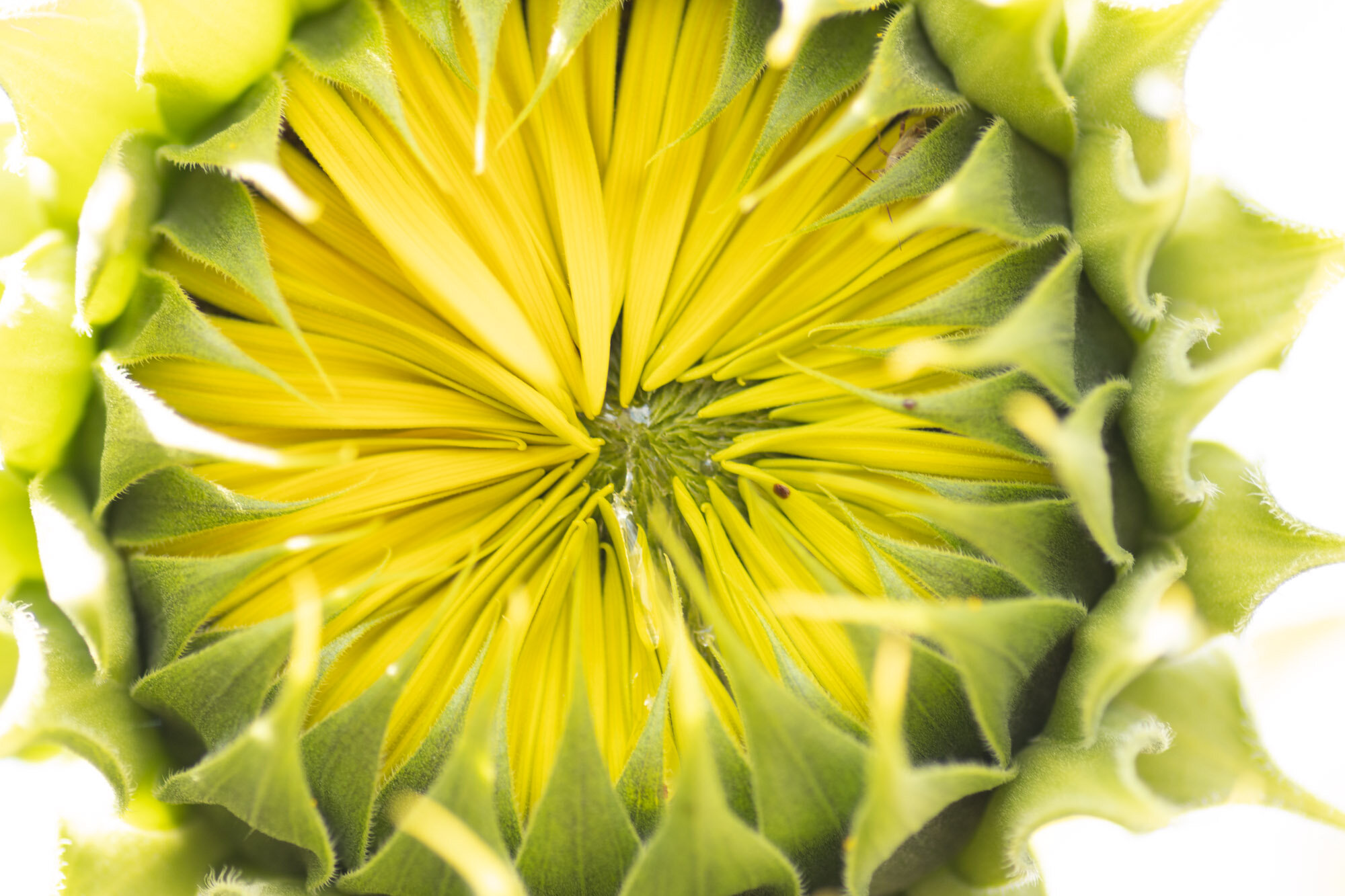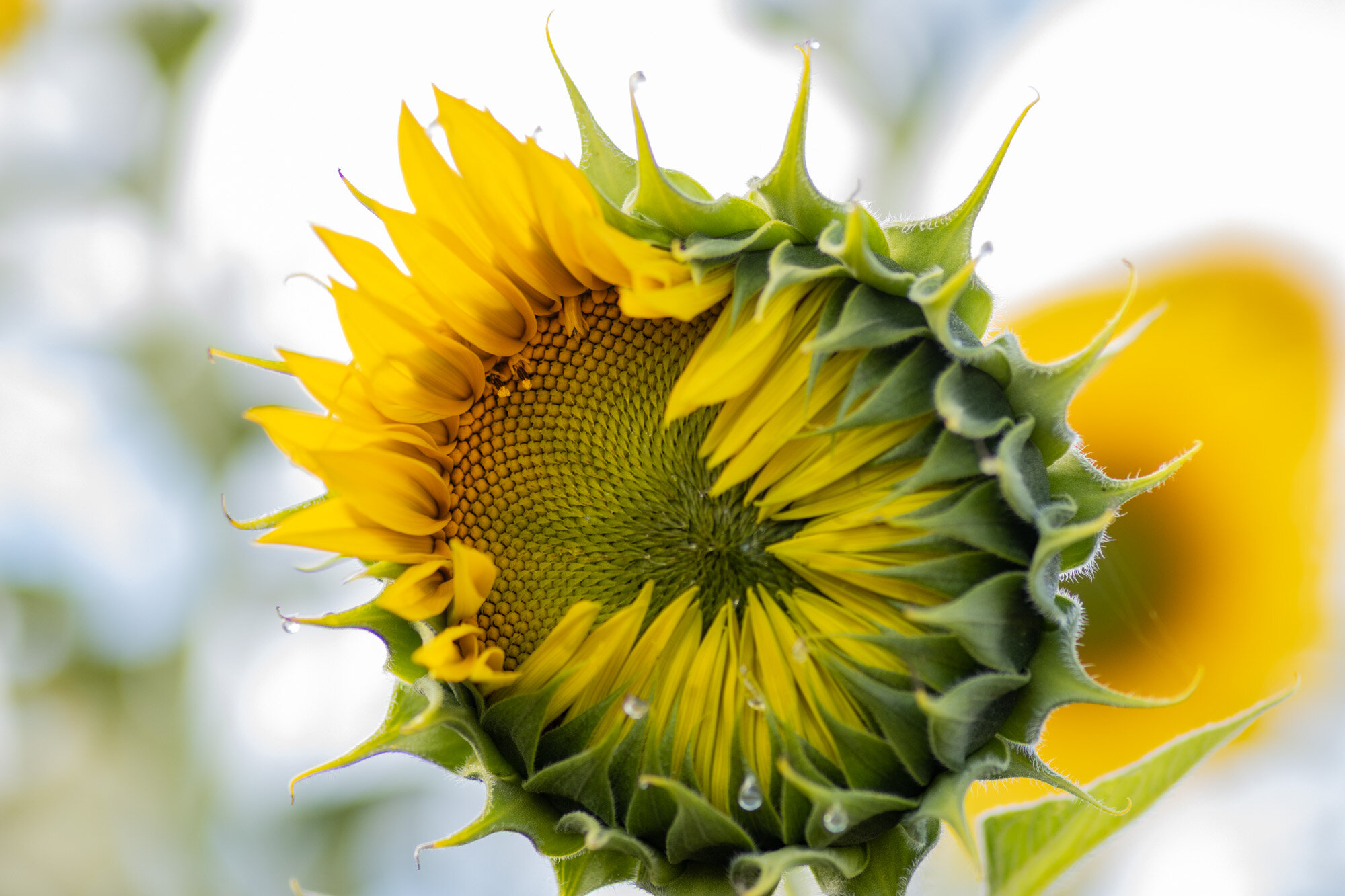Sunflowers - Reaching for the Sun
A seven acre field of bright yellow and red flowers welcomed me to the Maris Farm Sunflower Festival in Buckley, Washington. As it was the last weekend of the festival and late in the season, some of the early bloomers had already completed their cycles, but there were plenty of others waiting for me.
As I walked through rows and rows of these beautiful flowers, I was introduced to many types I had never seen. Flower size, height, color and flowers of the plants are the primary differences that give each variety its identity. There are 70 true sunflower species that fall into the genus Helianthus. Its name is derived from Greek “helios” for sun and “anthos” for flower.
· The head of sunflowers are really about 1000-2000 tiny flowers joined together
· Sunflowers are known to reach out and track the sun because they are on a circadian cycle known as heliotropism.
· Sunflowers are native to North America having been first grown by Native Americans in 3000 BC in today’s Arizona and New Mexico
· They are the national flower of Russia and the Ukraine, and the state flower of Kansas
· Sunflowers are the gift of choice for a couple’s third anniversary.
· The largest known sunflower head was 32½ inches wide and grown in Canada
Sunflowers have significance among many cultures. Various faiths have adopted sunflowers to express a symbol of worship and faithfulness, as in the flower's faithful dedication to the sun. Sunflower symbolism also includes the idea of longevity and long life. Many groups associate sunflowers with prolonged constancy and loyalty, reflecting its bud’s tendency to follow the sun across the sky.
Native Americans saw sunflowers as a symbol of courage. Warriors would carry sunflower cakes to battle with them or a hunter would sprinkle sunflower powder on his clothing to keep his spirit up. Some Natives call sunflowers the "fourth sister," in reference to the three sisters - corn, bean, and squash.
With its statuesque figure and face of gold, the sunflower lures its admirers into the heart of the sun. The Hopi Indians of the southwestern U.S. had a goddess who was the guardian of the sunflower. Her name was Kuwanlelenta, translated as “to make beautiful surroundings”. They and the Iroquois believed that there would be a large harvest if the number of sunflowers grown was also large.
The Incas used sunflowers to symbolize the Sun God, and brought them to temples for worship. The priestesses also wore sunflowers on their garments and as crowns. Revered by Aztecs in their native America, the flower was offered at the Temple of Huitzilopochtli, the deity of war, sun and sacrifice. The Aztecs of Peru were said to have worshiped sunflowers and placed sunflower images made of gold on their temples and crowned their princesses with the bright yellow flowers.
In Dutch literature, the sunflower was a symbol of devotion and loyalty. In their various stages of decay, these flowers also remind us of the cycle of life and death. Vincent VanGogh, a Dutchman himself, painted his famous “Sunflowers”, one of the most popular paintings in the National Gallery in Washington, DC. VanGogh completed seven versions of “Sunflowers” during an unusual time of optimism. He loved the color yellow because it represented happiness.
In China, sunflower symbolism extends longevity to include long life, good fortune, vitality, intelligence, and happiness. Sunflowers are said to mean to the Chinese good luck and lasting happiness which is why they are often given at graduations and at the start of a new business.
Do you wonder why sunflowers always follow the sun? Greek mythology celebrates a sunflower’s apparent dedication to the sun in the tale of a water nymph who fell in love with Apollo, the God of the Sun. In her adoration of Apollo, the water nymph would sit on the earth and gaze at the sun (Apollo) day after day. While Apollo took no notice of the nymph, the other gods felt compassion for her and turned her into a sunflower.
I brought home 15 stalks of sunflowers to distribute among family members, a host of an upcoming dinner to which I was invited, and of course several for myself. Since the flowers have long lives in water I was able to enjoy them for almost two weeks. Some of the photos here show the flowers at different stages of bloom and reflect beauty and detail not often seen by those that purchase these already fully open. Their beauty is on display throughout.
“Despite knowing they won’t be here for long, they still choose to live their brightest lives — sunflowers.” Rupi Kaur.











